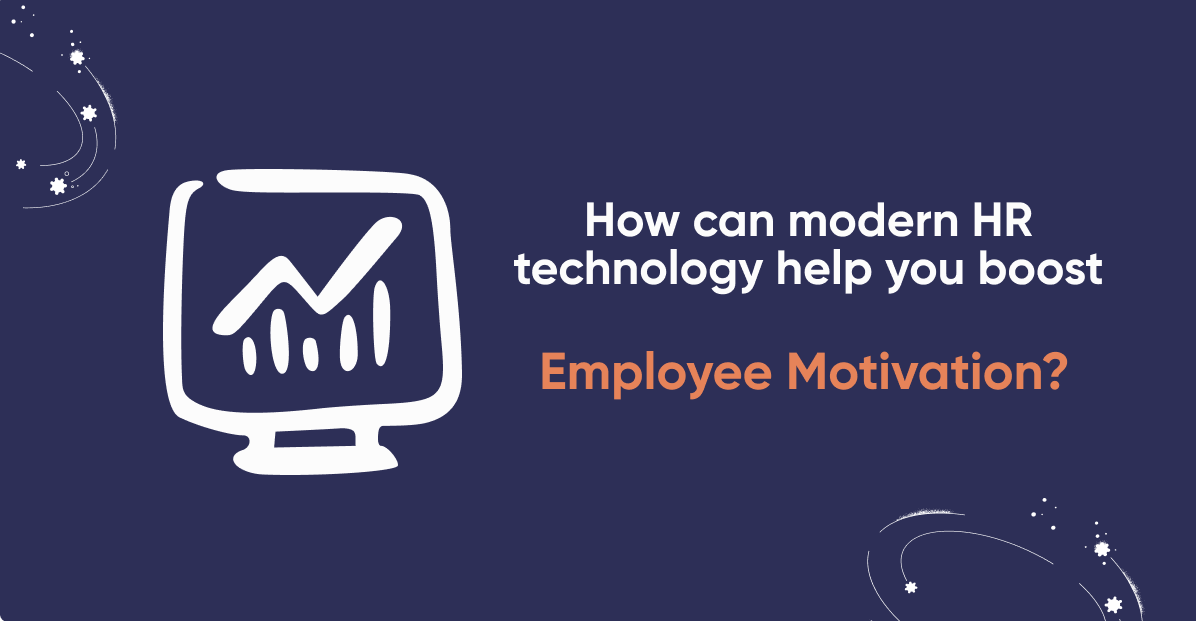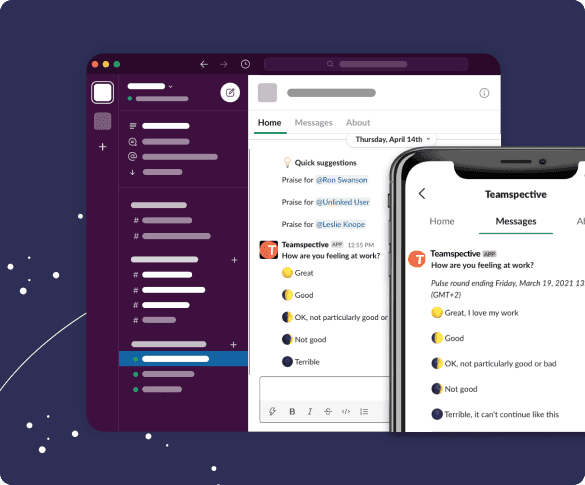Today HR professionals have powerful tools that help them successfully run and develop operations even in the most demanding environments. At the same time there are still areas where the potential of technology is underestimated. For example, employee performance reviews and 360 feedback, employee collaboration, and employee engagement.
In this article we share how modern tools can help to advance these aspects of work and boost employee engagement while also reducing HR workload.
Gather Employee Feedback Easily and Frequently
Employee feedback helps leaders understand whether employees are aligned and satisfied with the company culture and values. It also helps leaders to address bigger problems early enough.
Oftentimes, annual employee surveys do not provide a complete view of employee satisfaction with key areas of work such as motivation, wellbeing and psychological safety. Firstly, annual surveys capture only one point in time. Secondly, they are often focused on the executive team’s needs leaving individual teams struggling to take action.
A great solution to address the above are pulse surveys. These are short and easy questionnaires that only take around 30 seconds of employee’s time to be filled in. And things get especially easy, if pulse surveys are integrated to employee’s existing daily tools such as Slack or MS teams (that is what we did at Teamspective):
Collecting valuable data regularly helps to monitor, improve and support employee engagement throughout the whole year. And more importantly it allows every team to take regular actions based on survey results.
Make Informed Decisions from the Collected Data
Annual reviews, pulse surveys, feedback sessions and other initiatives help you to collect insights from your people. But is that enough? The most crucial part is to take actions based on collected insights and improve.
Proper technology supports this part by automating most of the analytics and allowing you (and your teams) to focus on the actions. For example, Teamspective automatically generates smart recommendations tailored for each team and whole company.
Sometimes more detailed analysis is needed. For that it’s important to have visual dashboards which help spot trends in your most important KPIs such as clarity of goals, communication in team, workload and others!
Make sure all teams can have direct access to the results so they can proactively use this information to define key areas for improvement. Teamspective’s data shows that more than 80% of teams have unique improvement areas which do not always align with the company initiatives - thus it’s important that teams can focus on what drives the best impact for them.
Establish a strong internal feedback culture
At Teamspective we learnt that regular feedback leads to an increase of over 20% in key drivers of employee engagement and performance. This is why we encourage you to set an expectation for your employees to regularly give praise and ask for feedback from their manager, colleagues or even customers. This goal can be achieved, if feedback processes are simple and clear.
One of the best ways to motivate a person to complete a certain action is to make it effortless. Great feedback tools today are integrated into your daily communication channels (Slack, Teams, email) and offer tips that make giving feedback easy. They can even activate those who haven’t collected feedback by sending reminders and tailored suggestions.
At Teamspective we have studied thousands of professionals and found that the majority of them know the importance of giving praise and feedback - it’s just not top of mind or it feels too hard to do so. A tool that activates people every now and then increases the amount of feedback discussions up to 6 times, and the other principles mentioned above further reinforce the impact.
So what are the benefits?
The right technology tools allow HR professionals and team leaders to listen to their people and to boost employee engagement in an easy and interactive way. They enable teams and individuals to develop independently, creating a shift from HR processes (and HR dependency) towards habits that are part of your company culture.
Finally, what is even more important is the opportunity to make your company more agile with frequent surveys and always-on feedback processes. Being the fastest to learn, react and improve is the perfect advantage for any company dealing with the increasing competition in the modern global economy.



